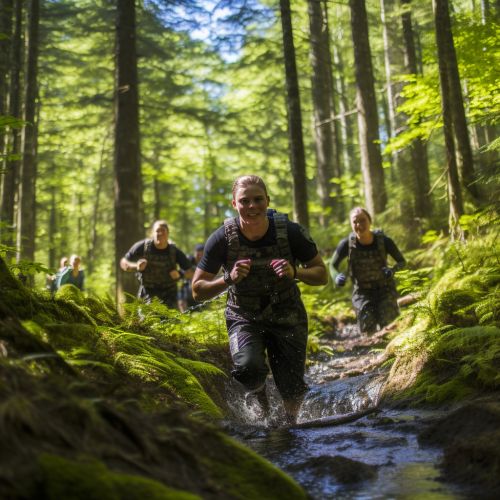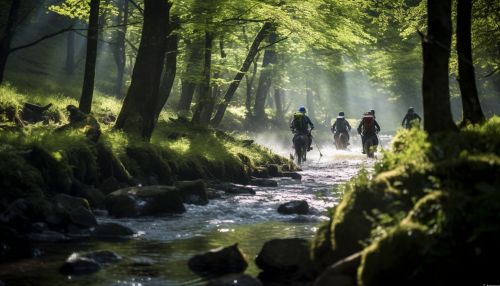Adventure racing
Overview
Adventure racing is a multi-disciplinary team sport involving navigation over an unmarked wilderness course with races extending anywhere from two hours up to two weeks in length. The principal disciplines in adventure racing include trekking, mountain biking, and paddling although races can incorporate a multitude of other disciplines including climbing, abseiling, horse riding, skiing and white water rafting.


History
Modern adventure racing has its roots in the military where it was conceived as a training exercise for soldiers. The first civilian adventure race, the Karrimor Marathon, took place in 1968 in the United Kingdom. This event laid the groundwork for the sport as we know it today, with teams of two navigating through a wilderness course using only a map and compass.
Types of Adventure Racing
Adventure races can vary greatly in length and the types of disciplines involved, which can include orienteering and navigation, cross-country running, mountain biking, paddling, climbing, and related rope skills. An expedition event can span ten days or more while an adventure sprint can be completed in a matter of hours. There is typically no dark period during races, irrespective of length; competitors must choose if and when to rest.
Expedition Races
Expedition races are typically one of the longest types of adventure races, often taking a week or more to complete. These races often incorporate multiple disciplines such as trekking, mountain biking, paddling, climbing and orienteering. Teams are required to navigate day and night over a course that may cover hundreds of kilometers.
Sprint Races
Sprint races are a shorter, more intense format of adventure racing, typically taking a day or less to complete. These races involve a combination of running, orienteering, mountain biking, and paddling. Sprint races are often held in urban environments, which adds an additional challenge as competitors must negotiate traffic and pedestrians in addition to the usual racing challenges.
Wilderness Races
Wilderness races are a middle-ground between expedition and sprint races. They typically last between 24 and 48 hours, and involve multiple disciplines. Wilderness races are held in remote, wilderness settings, and often involve navigation and orienteering challenges.
Rules and Teamwork
Adventure racing is unique in that it is a team sport. Teams are usually composed of four athletes, and no team member can be more than 100m from a teammate at any time. The disciplines are usually performed sequentially and team members must stick together, helping each other to overcome the many challenges. Navigation and the ability to work together under pressure are often seen as just as important as physical fitness in adventure racing.
Training and Preparation
Training for an adventure race is a significant undertaking. Because adventure racing involves so many disciplines, training must be multi-faceted. Athletes need to train in each of the disciplines included in the race, but also need to practice the transitions between the different disciplines.
Equipment
The equipment used in adventure racing varies depending on the race format. In addition to gear for the specific disciplines, teams are often required to carry or be able to use a number of additional tools. Navigation and first aid equipment are common requirements.
Impact and Influence
Adventure racing has had a significant impact on the outdoor industry, with manufacturers producing gear that caters specifically to the needs of adventure racers. The sport has also had a significant impact on the communities that host races, bringing in significant tourism revenue.
